Mastic, a rare gum or food/beverage flavouring, is the resin of the mastic tree (Pistacia lentiscus var. Chia). It is synonymous with the neighbouring Greek island of Chios; indeed, mastic in Turkish translates to ‘damla sakızı’, and the Turkish name for the Island of Chios is ‘Sakız Adası’ or Mastic (Gum) Island. After shipping and general trade, mastic exports account for the third largest GDP industry for the Island of Chios.
Mastic – Table of Contents
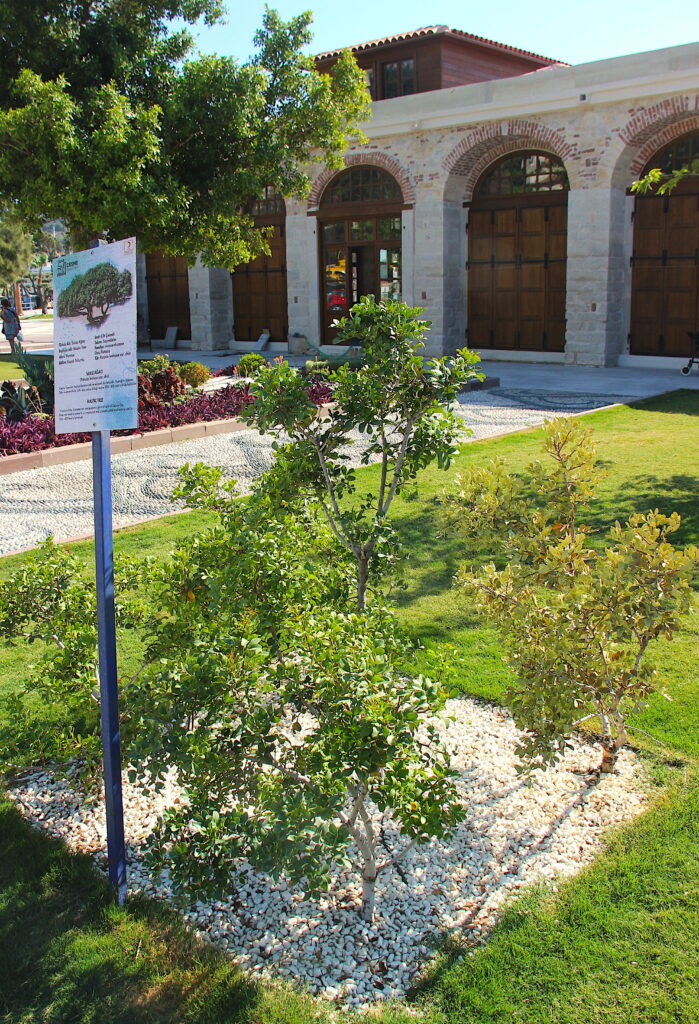
Çeşme was an important mastic production centre in the past centuries, but when tobacco became a high-value cash crop, tobacco farmers largely replaced the region’s mastic trees and vineyards. Later, a focus on tourism caused a decline in agricultural activities in the peninsula. In recent years, Tūrkiye resumed efforts to boost mastic production, and many thousands of trees have been planted in the countryside around Çeşme.
Sapling mastic trees planted in 2022 close to the shore in Çeşme at Cumhuriyet Meydanı
Mastic Tree Cultivation
The mastic tree requires hot and dry summers and mild winters typical of the Aegean climate, where the average annual temperature is between 15-20°C. These conditions are ideal for the tree’s growth. The mastic tree develops best in calcareous, sandy, and well-drained soils with a pH value between 7 and 8. The soil should be loose and without stones, as the tree roots penetrate deep into the ground. Mastic tree saplings are usually planted in spring or autumn when the soil temperature is above 10°C.
The slow-growing evergreen mastic shrub reaches a height of up to three metres and matures after around forty years with a lifespan of one hundred years. Trees can start producing mastic resin after five to eight years of growth, yielding between 60g and 250g of resin. In preparation, the lower branches of the trees are pruned in February, and in June, the ground around the trees is cleaned and covered with a white chalkstone power. Harvesting of mastic occurs from July through to September. It consists of “pricking” incisions into the tree to elicit the “tears” of sap that are hardened and crystalised on the tree before falling to the ground. The white/pale yellow resin is collected, sorted for quality, and hand-cleaned to remove sand and other contaminants.
Mastic Production in Çeşme
Due mainly to the temperate climate and soil conditions similar to the southern part of Chios Island, the Çeşme peninsula remains the top location for mastic yields in Tūrkiye. There is an effort to make Çeşme a centre for gastronomic tourism for which mastic is an indigenous and, therefore, essential ingredient. After a 50-year hiatus, mastic trees have once again been planted in areas such as Çiftlikköy village south of Çeşme and on the outskirts of Alaçati. Following destructive forest fires in August 2021, just north of Ildiri on the Gerence Gulf, a regeneration of the region was started with the planting of over 5,000 mastic saplings. As of 2022, production in Çeşme is stated to have reached 50kg, and there are plans to plant a further 20,000 saplings.
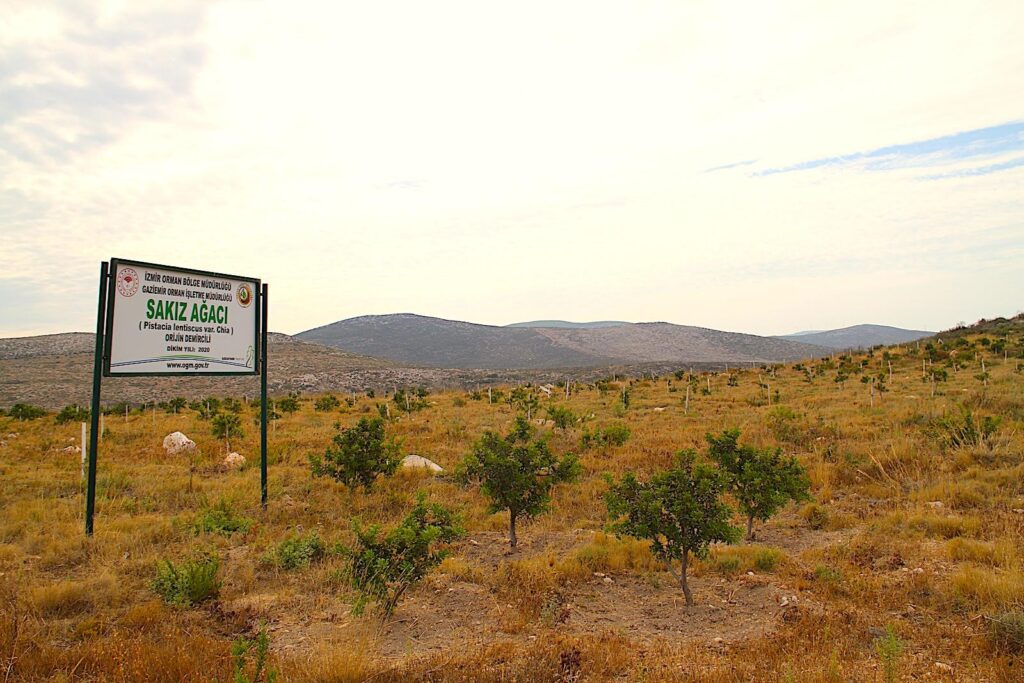
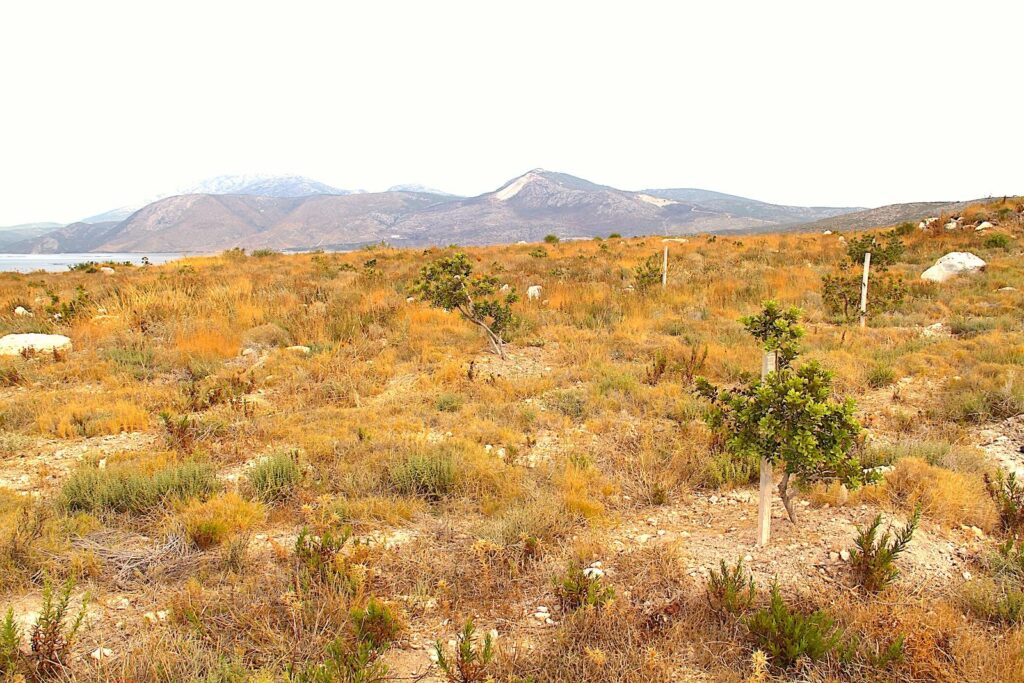
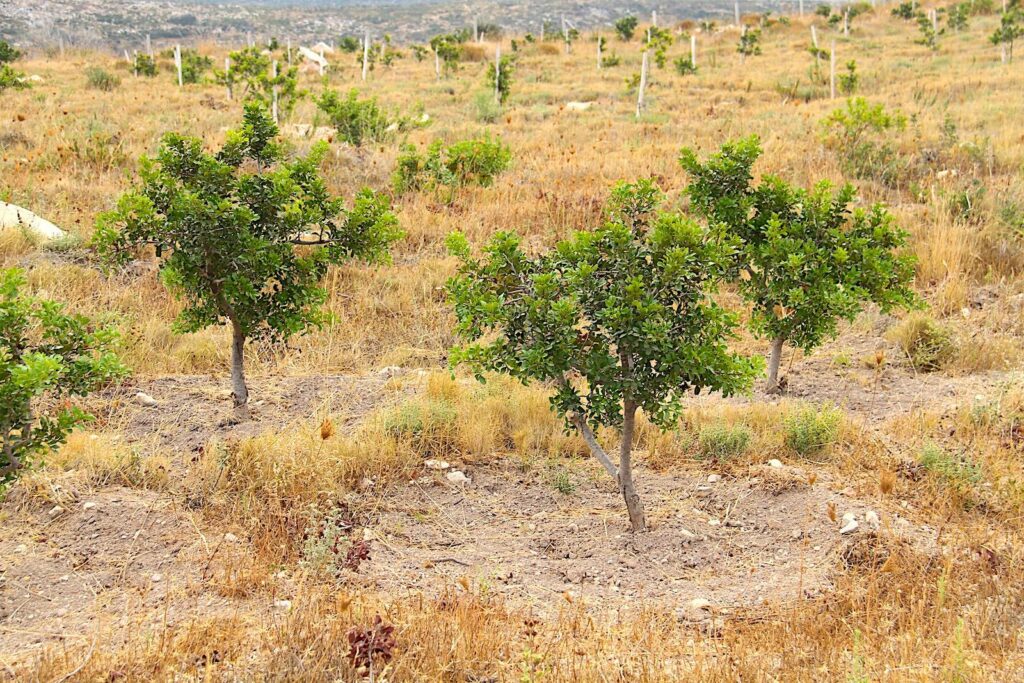
In a TV interview in August 2024, Çeşme mastic producer Hasan Tütüncüoğlu stated that the market for mastic has a raw product value of TL 10,000-12,000 (€270-€325) per kilogram, increasing as it is processed and refined. He also noted that finding agricultural land for growing mastic is a challenge since it is a protected plant that cannot be transplanted, and zoning regulations restrict future land development. Unlike olive trees, which are also protected, their roots grow so deep that attempting to lift the mastic tree will kill it. Mastic trees do not require watering, spraying or fertilisers, so the growing cost is low. While the current mastic production is in its infancy in Tūrkiye, Çeşme has several advantages over Chios, such as better infrastructure and manpower availability: with many young Chians moving to Athens or Europe, in Chios, the population is old, whereas Tūrkiye has a young and keen workforce.
My Mastic Tree Project
The project known as “Sakız Ağacım Çeşme” is an initiative aimed at boosting the cultivation of mastic trees in the Çeşme region. This project, led by Tūrkiye’s Ministry of Agriculture and Forestry, focuses on increasing the number of mastic trees through extensive reforestation and cultivation efforts. Over 30,000 mastic tree saplings have been planted, with plans to plant an additional 15,000 saplings annually. The overarching goal is to turn Çeşme into a significant centre for mastic production, boosting its agricultural and economic profile alongside its established tourism industry. The project promotes sustainable agriculture and aims to revitalise the local economy by involving local communities, including women’s cooperatives, in the cultivation process. The project is based in an established mastic park in Alaçatı at the junction of 15000 Sk. and 6000 Sk., adjacent to the Sakızlar Restaurant.
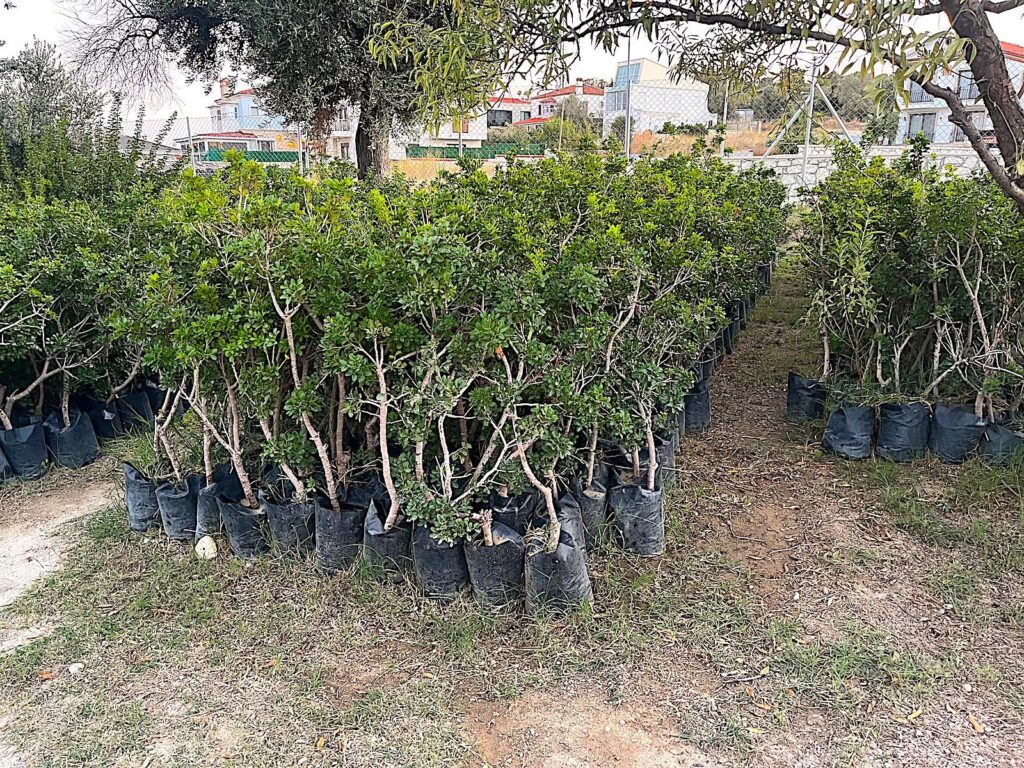
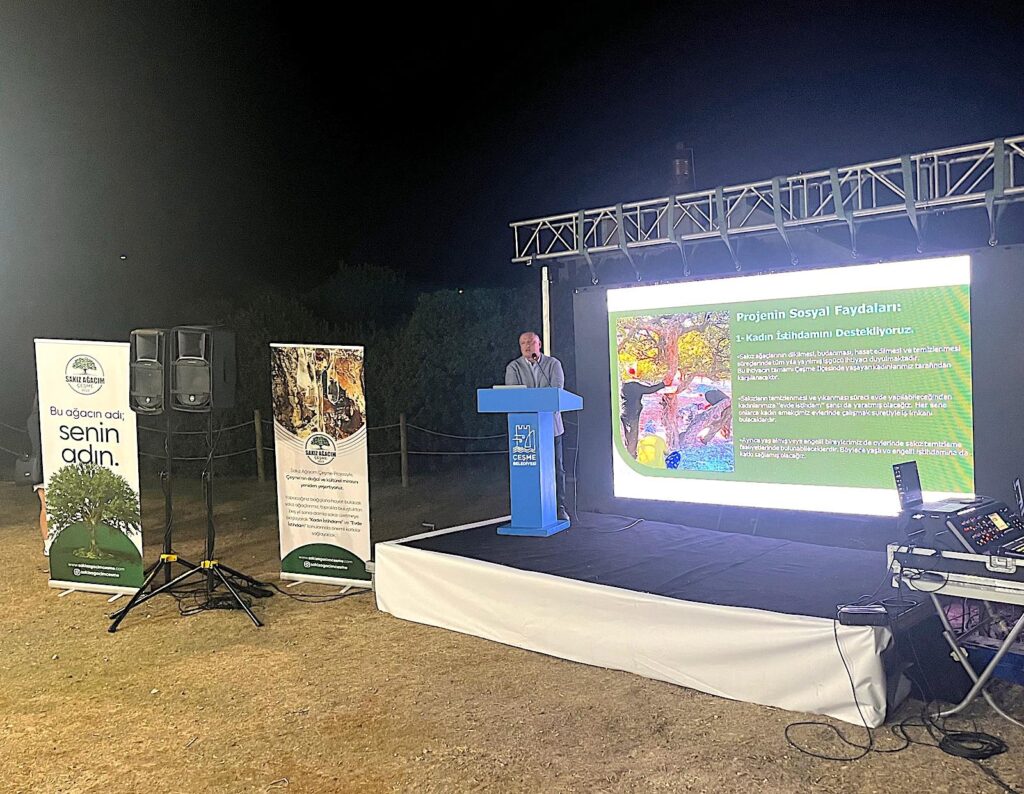
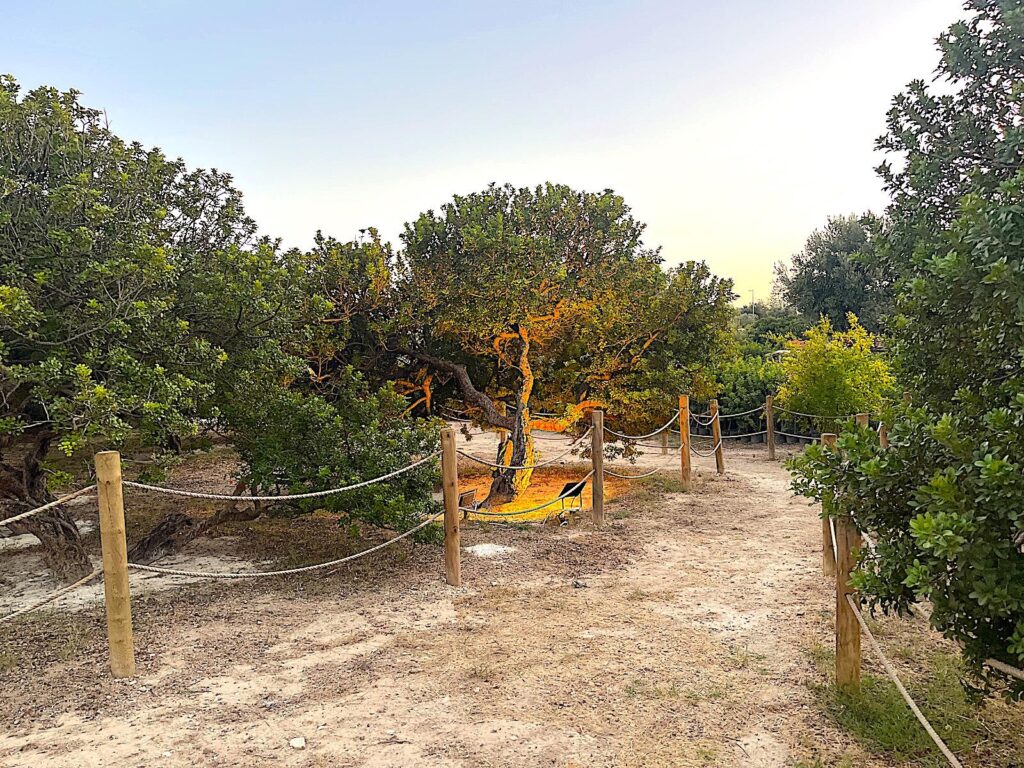
The mastic project allows individuals and corporations to volunteer or donate to plant sapling trees; see the participation and donation page project website (Turkish only). When donations (1,500 ₺ per tree) are made to the Çeşmeköy Agricultural Development Cooperative, the cooperative will plant and maintain a mastic sapling, a print of the donor’s name is attached to the mastic sapling and the donor is given the precise location of the tree.
Commercial Uses of Mastic
The boutique food store Çeşme Köy Kurabiyecisi on the high street in Çeşme is typical of several such shops in Çeşme and Alaçati that specialise in products, and bakery items flavoured with mastic.

The resin is typically processed and used in various ways, primarily for food (sweets, Turkish delight, chewing gums, biscuits, cakes, desserts, ice creams, and jams) and beverage (coffee, sodas, and alcoholic spirits) flavourings but also for cosmetics (toothpaste, soaps, shampoo, face creams, perfumes, and body oils).
Besides Greece and Turkey, mastic is a popular ingredient in the products and cuisine of Eygpt, Iraq, Japan, Lebanon, Morrocco, Saudi Arabia and Syria.
Example beverages with mastic:
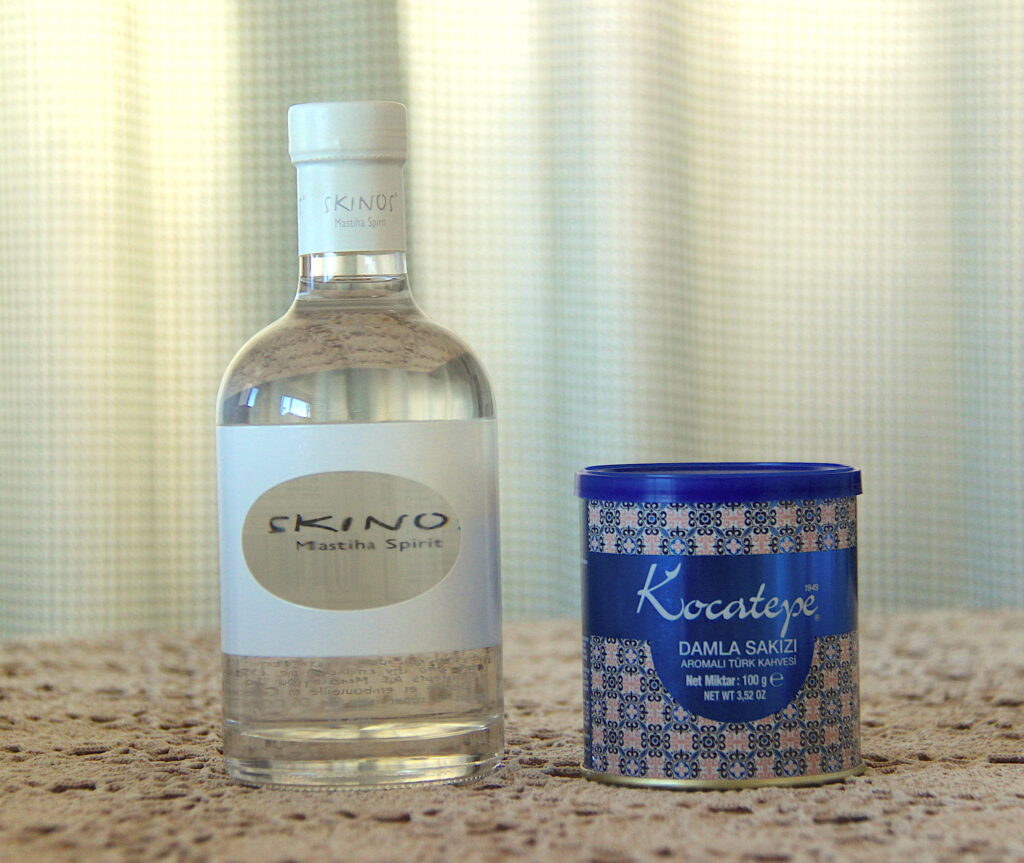
“Skinos Mastiha Spirit” is a Greek 30% alcoholic spirit flavoured with mastic and sugar. It is used in long drinks such as Skinos and lemonade or contemporary cocktails like Skinos Mediterranean Negroni. It can be purchased in duty-free shops in Greece and Turkey.
“Kocatepe Damla Sakızlı Türk Kahvesi” is a ground Turkish coffee bean flavoured with mastic. It is prepared by mixing with cold/ambient water and cooked at medium-low heat for approximately 3 minutes. It can be purchased in supermarkets and grocery stores throughout Turkey.
Properties of Mastic
It is understood that mastic has antioxidant, antimicrobial and anti-inflammatory action; 2,400 years ago, the Greek physician Hippocrates II and 2,000 years ago, the Greek physician Pedanius Dioscorides noted and recommended mastic in cases of stomach pain, ulcers, digestive aids and oral hygiene.
Although initially bitter to taste, the raw hard resin can be chewed and will soften to a gum texture, giving off the distinct floral flavours of mastic. In 2015, the European Medicines Agency (EMA) approved mastic as a traditional herbal remedy for the symptoms of mild digestive disorders.
Mastic gum contains a complex mixture of chemical compounds contributing to its various medicinal and industrial uses. The primary chemical constituents are terpenes, essential oils, and polyphenols, which give mastic antibacterial, antioxidant, and anti-inflammatory properties. Below is a breakdown of its fundamental chemical properties:
- Terpenes: Mastic is rich in monoterpenes, sesquiterpenes, and triterpenes. The most abundant ones are α-Pinene and β-Myrcene. These compounds are responsible for its characteristic pine-like aroma and contribute to its antimicrobial effects. Limonene is a common terpene found in mastic oil. It is also present in citrus oils and is known for its anti-inflammatory and antioxidant properties.
- Triterpenic Acid: Mastic gum contains triterpenic acids such as masticadienonic acid and isomasticadienonic acid. Triterpenic acids have been found to possess strong anti-inflammatory and anticancer properties. Research suggests they may play a role in mastic’s effectiveness against Helicobacter pylori and other gastric issues. Oleanolic acid is a compound with known antimicrobial and anti-inflammatory activities. Oleanolic acid contributes to mastic’s healing properties, especially for digestive and skin conditions.
- Essential Oils: Mastic contains small amounts of essential oils comprising various terpenoids. The essential oil content is responsible for mastic’s aromatic properties and contributes to its medicinal uses in traditional remedies and modern pharmaceutical formulations.
- Phenolic Compounds: Mastic gum contains polyphenols, which are potent antioxidants. These compounds help neutralise free radicals and reduce oxidative stress, making mastic beneficial for preventing chronic diseases related to oxidative damage.
- Volatile Components: When processed or exposed to heat, mastic resin releases volatile organic compounds (VOCs). These include eugenol, known for its antibacterial and analgesic properties and often used in dental treatments, and caryophyllene, a compound with anti-inflammatory properties commonly found in other plants such as cloves and cannabis.
- Insolubility and Solubility: Mastic is only slightly soluble in water but dissolves in alcohols and organic solvents. This property makes it useful in various pharmaceutical and cosmetic formulations where organic solvents are needed.
Health Benefits of Mastic
Mastic gum has been used for centuries in traditional medicine, especially in the Mediterranean. Its health benefits are backed by modern research and cover a wide range of areas, including:
- Digestive System: Mastic helps the digestive system function by relieving stomach pains, regulating stomach acid, and facilitating digestion. Its natural components accelerate bowel movements and help eliminate problems such as constipation.
- Oral and Dental Health: One of the most well-known benefits of gum is its effect on oral and dental health. Mastic balances the acid level in the mouth by increasing saliva production, protecting against tooth decay. It eliminates halitosis and strengthens the gums. Mastic is a natural anti-bacterial and prevents gum diseases by preventing the proliferation of harmful bacteria in the mouth.
- Antioxidant Source: Mastic contains a high percentage of antioxidants, which protect the body from the harmful effects of free radicals, delay the signs of ageing, and support skin health. Antioxidants also protect heart health and strengthen the immune system.
- Inflammation Reduction: Mastic effectively reduces inflammation in the body, relieving inflammation-induced disorders such as rheumatic diseases and joint pain. It protects against respiratory infections and relieves coughing with its expectorant effect.
- Cholesterol Reduction: Studies have shown that regular mastic consumption helps reduce bad cholesterol (LDL) levels. This condition protects cardiovascular health and reduces the risk of heart attack. Mastic also benefits diabetics by balancing blood sugar.
- Skin Health: Mastic is an effective ingredient in skincare that supports the regeneration of skin cells and increases the skin’s elasticity. It helps to eliminate skin problems such as acne. Oils obtained from gum nourish the skin and provide a healthier and brighter appearance.
Mastic in Chios
The Chios Mastic Museum was created to preserve and promote the heritage of mastic cultivation on Chios, which has been a vital part of the island’s economy and culture for centuries. It is centred on the history, cultivation, and cultural significance of mastic, a resin derived from the mastic tree (Pistacia lentiscus var. chia) that grows exclusively on the southern part of Chios island. The Piraeus Bank Group Cultural Foundation established the museum and officially opened it publicly in 2016. The museum provides a comprehensive overview of the history of mastic cultivation on Chios, tracing its origins back to antiquity. It explores how mastic became a valuable commodity in the Byzantine and Genoese periods and how it has been traded and used across the Mediterranean and beyond.
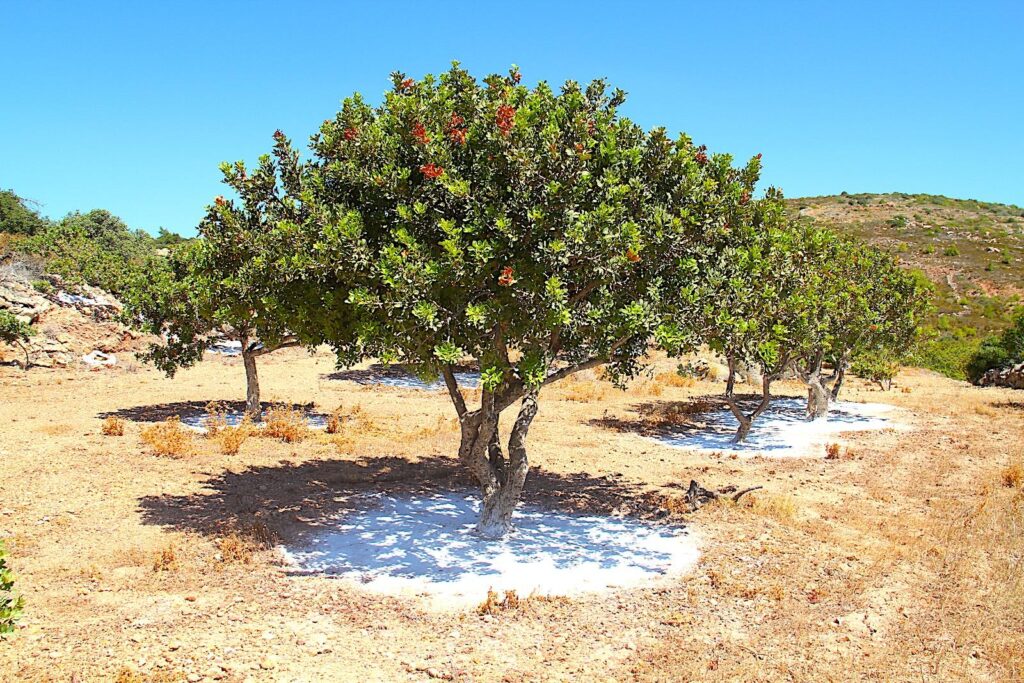
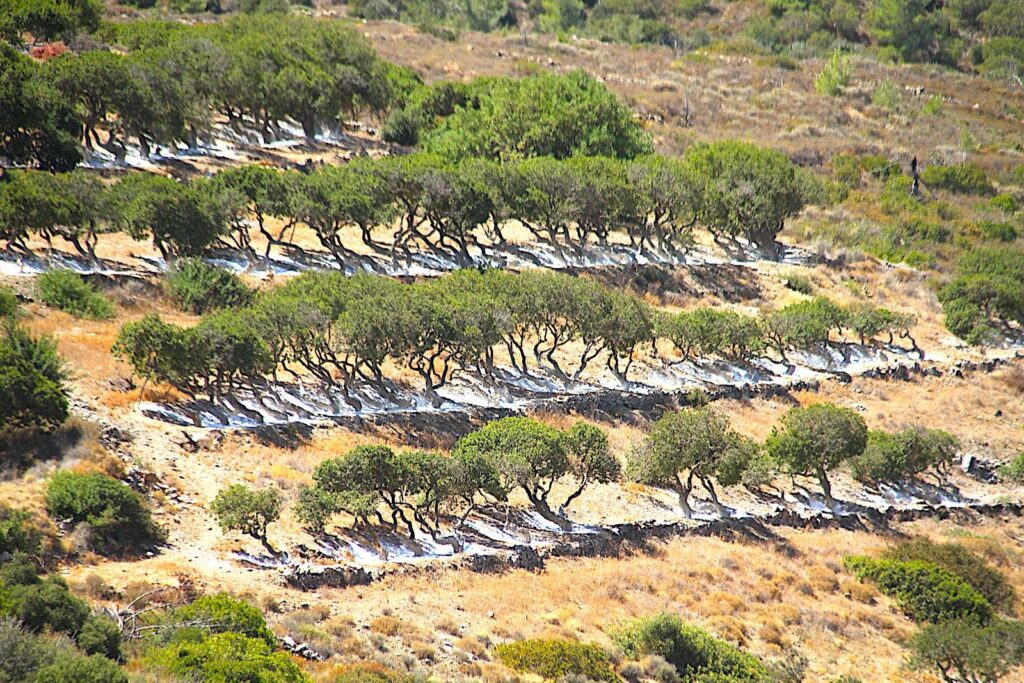
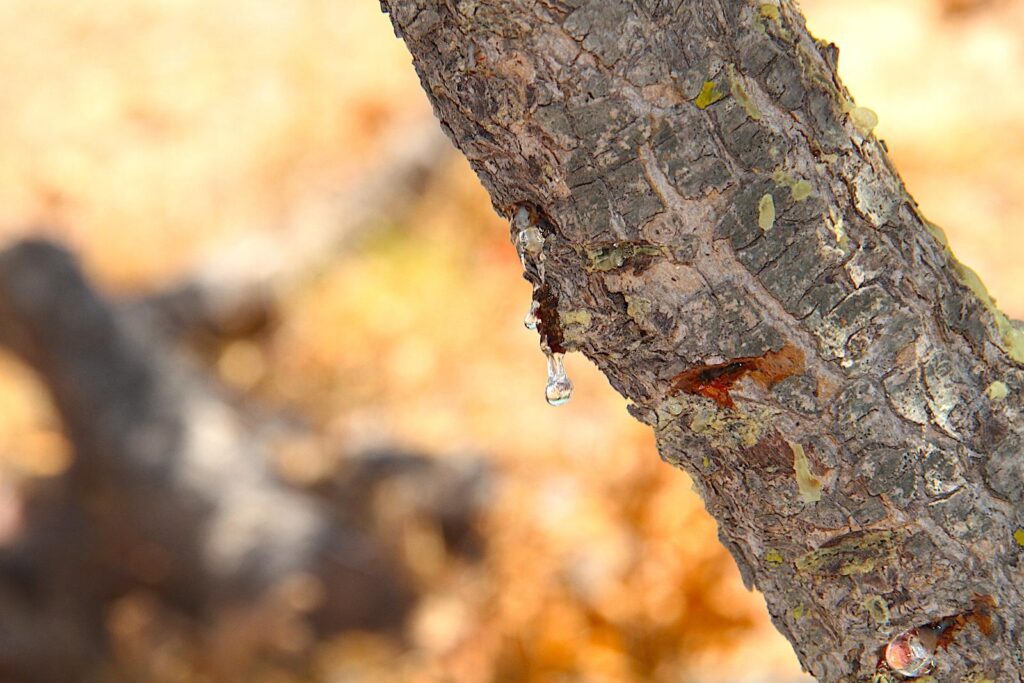
One of the key exhibits in the museum is dedicated to the traditional methods of mastic cultivation and harvesting. It features tools, photographs, and video presentations that illustrate the labour-intensive techniques used by mastic growers. The museum also explores the cultural aspects of mastic production, including its role in the social and religious life of the island’s inhabitants. Mastic has been used in various rituals, culinary traditions, and medicinal practices, and these uses are highlighted in the museum’s displays.
Another section of the museum is dedicated to the economic importance of mastic, examining how mastic has shaped the economy of Chios, particularly in the Mastichochoria region (the “mastic villages”), and its role in international trade. The exhibit also touches on modern uses of mastic in industries such as cosmetics, pharmaceuticals, and food production. Visitors can see and smell different mastic forms or try their hand at traditional mastic harvesting techniques in a simulated environment. The museum features a gift shop where visitors can purchase mastic products, including gum, sweets, cosmetics, and more. There is also a café that serves refreshments and snacks made with mastic, allowing visitors to sample the unique flavours of this local product.
See also likecesme.com Chios
